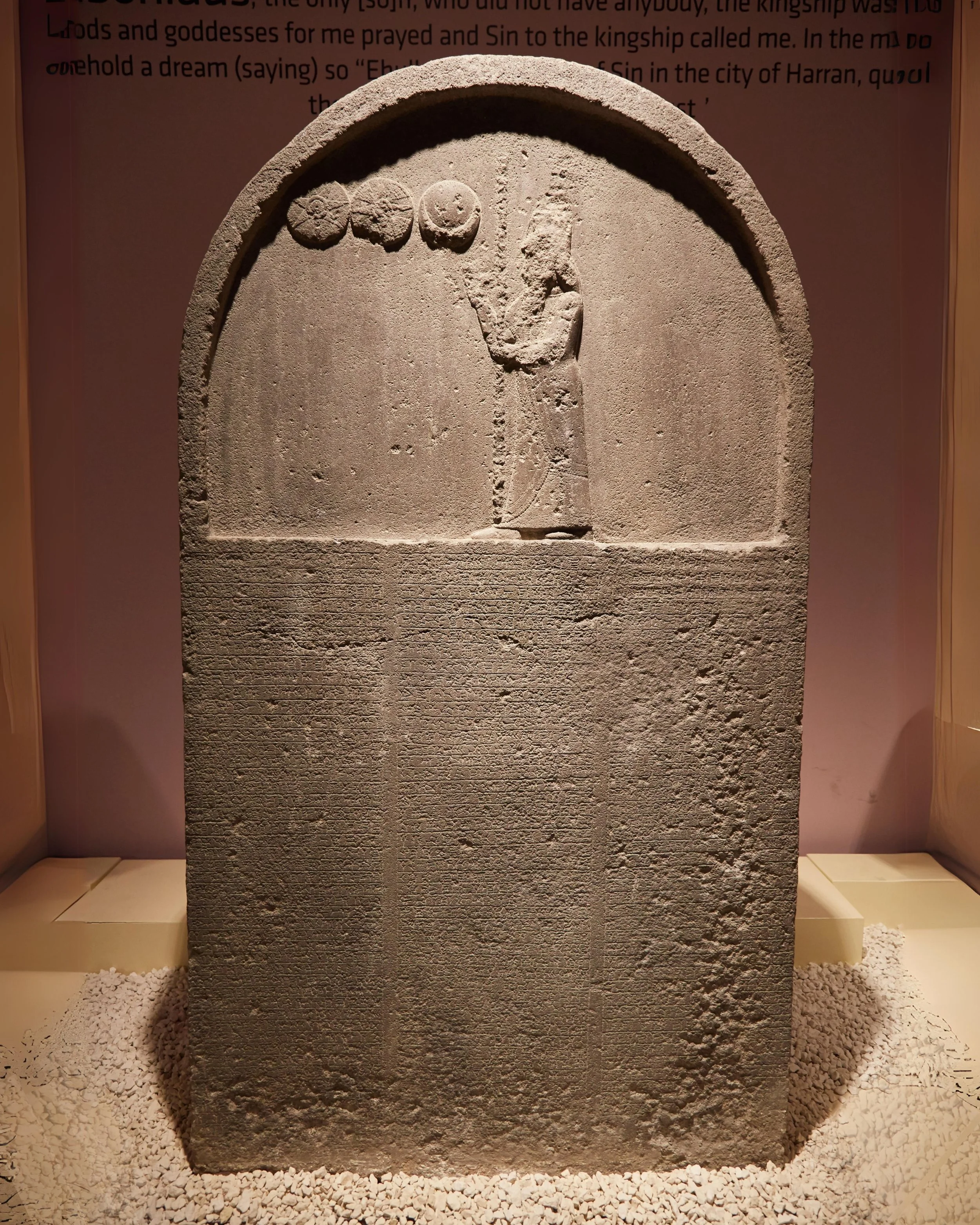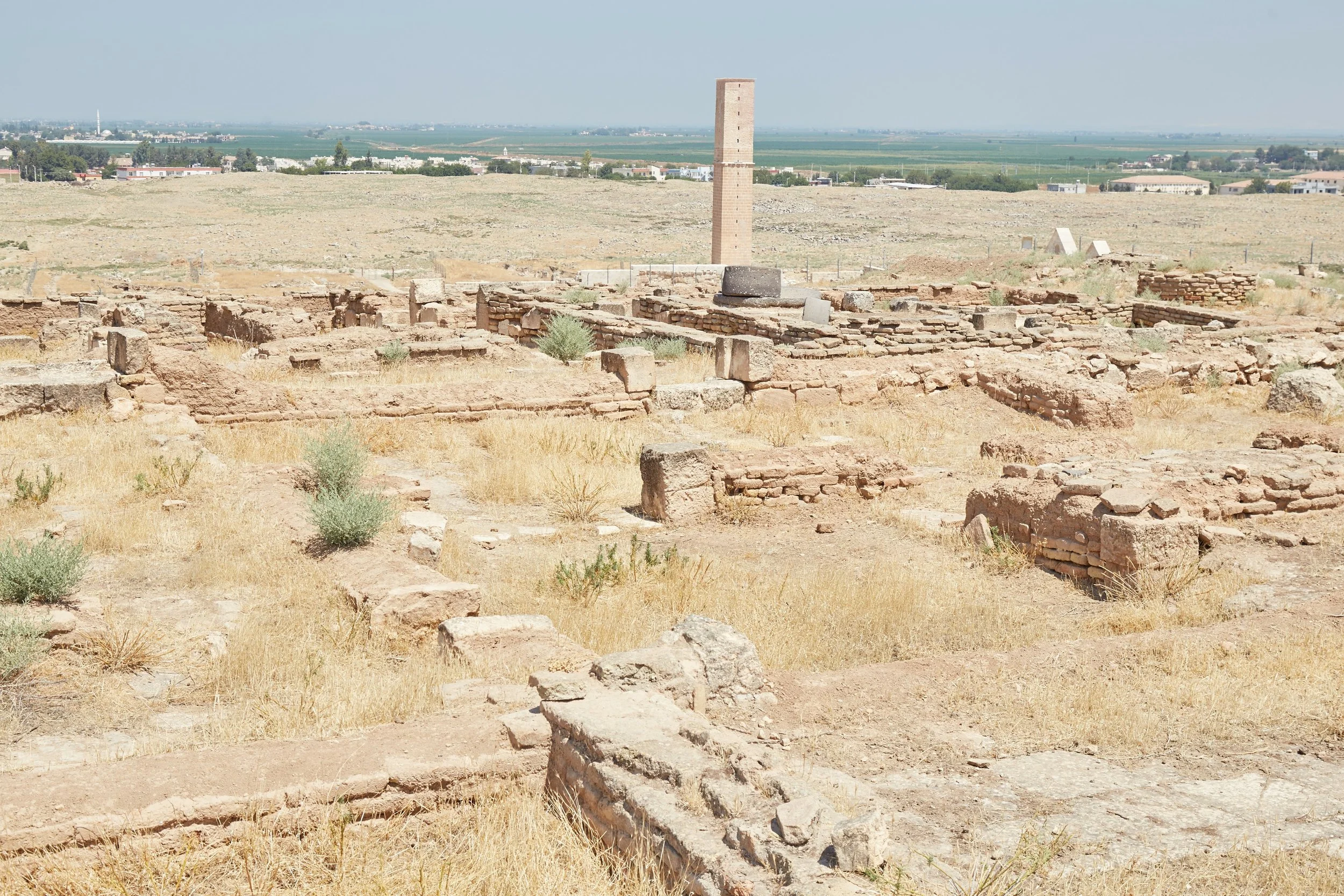Uncovering the Secrets of Harran and its Assyrian Connection
The discovery of a stele (H1A) at Eski Harran in 1906, situated approximately 6kms north of the ancient city of Harrânu, forming what we now know as The Harran Inscriptions of Nabonidus, yields the earliest possible archaeological evidence to Assyrian continuity post-empire.
The stele was originally erected along with three other steles at the temple of Sîn, known at the time as é-ḫúl-ḫúl. It is presented as an autobiography of Adad-guppi (mother of King Nabû-na'id) and reveals a decline in the abilities of the progeny of Assyrian officials in offering fumigation to the graves of the monarchs and her assumption of the responsibility for offering perpetual offerings for them. This account aligns with The Fall of Nineveh Chronicle (BM 21901) – providing affirmation of Assyrian presence post-609 BC.
Pictured: The Harran Inscriptions of Nabonidus
The text reads:
"Afterwards they died; none of their children, none of their families and of their officials to whom—when they had been put into office—they had given rich gifts, performed actually as much as a fumigation-offering, whereas I brought monthly, without interruption—in my best garments—offerings to their souls, fat lambs, bread, fine beer, wine, oil, honey, and all kinds of garden fruits, and established as perpetual offerings abundant fumigations (yielding) sweet smells for them and placed ... before them".
It must be noted that King Nabû-na'id was not of the royal house of Nabû-apla-uṣur but was the son of Nabû-balâssi-iqbi, whom the king refers to as “the wise prince” (BM 91109), and of the high-priestess of the god Sîn at Harrânu: his mother; Adad-guppi. It is plausible that both parents may have been of the Assyrian royal family.
According to the stele, Adad-guppi was born in the 20th year of the reign of Aššurbanipal, and during this time the high-priestess of the great shrines were commonly princesses of royal blood. Common identifiers of Adad-guppi describing herself as a worshipper (paliḫtu and paliḫassunu) of Sîn, which is derived from the word palāḫu ‘to respect, honour, venerate’ along with her love for the city and prayer for the restoration of the temple as it was destroyed in 609 BC by the Medes after the brief reign of the last Assyrian king, Aššur-uballiṭ II (612-609 BC), himself a member of the royal family. The temple had also been restored previously by Assyrian kings Šalmaneser III and Aššurbanipal. Chiefly, Adad-guppi, a member of the royal family, along with other administration individuals in Harrânu continued their roles in society after Assyrian dominance in the region had ended.
Pictured: The archaeological mound at the ancient city of Harrânu
According to a Neo-Babylonian text (Ist EŞEM 01327), Nabû-na'id laments how the city of “Ḫarrān (and) Eḫulḫul, which have been in ruins for fifty-four years, (whose) sanctuaries had been laid to waste by the desecration wrought by a barbarian horde (the Medes)”, and with the consent of the gods he would return the god Sîn to his place.
Nabû-na'id also attempted to transfer devotion for the moon god, bequeathed by his mother, to the next generation. According to another Neo-Babylonian text (BM 108981), he appointed his daughter, Ennigaldi-Nanna, as an entu-priestess at the Egipar temple in Ur, which was the temple of Ningal, the spouse of Sîn. The appointment of a princess to entu-priestess was a forgotten custom from the middle of the Old Babylonian period, but Nabû-na'id was eager to revive this hoary tradition in order to fulfil the order of the moon god.
The Ulu Cami, or the Great Mosque of Harran, established by the Umayyad Caliphate in the 8th century AD, carries the possibility of being constructed over the revered Sin Temple (known at the time as é-húl-húl "House of Rejoicing"). The Harran Inscriptions of Nabonidus that were discovered in the pavement of the north entrance of the structure (H1B) indeed offer compelling evidence reinforcing the association between the site and the Temple of Sîn. The expressions of admiration by King Nabû-na'id for Sîn by elevating him as the "king of the gods", along with an account of rebuilding the é-húl-húl temple and perfecting its structure, provides compelling evidence linking the site to the Temple of Sîn. The inscription not only validates the connection but also underscores the significance of the king’s efforts in restoring and honouring the Moon God within the cultural and religious context of Harran.
Pictured: The Ulu Cami, or the Great Mosque of Harran
Abbreviations:
BM: British Museum
H: Harran




